Calling Planet Earth: Sun Ra, the Original Space Musician:
 Upon hearing Sun Ra’s “Constellation” in a Downbeat Magazine blindfold test Brian Eno said, “I wish I had done it myself. I’m extremely envious that somebody else did it. I’d give that five [stars] actually.”
Upon hearing Sun Ra’s “Constellation” in a Downbeat Magazine blindfold test Brian Eno said, “I wish I had done it myself. I’m extremely envious that somebody else did it. I’d give that five [stars] actually.”
Guitarist Syd Barrett reputedly blew his mind to The Heliocentric Worlds of Sun Ra before launching Pink Floyd.
Guitarist Daevid Allen was inspired by Sun Ra when he formed the Daevid Allen Trio and went on to found The Soft Machine and his long-lived space band, Gong.
SUN RA was the original space musician, although when most people think of space music, he’s probably not the artist who comes to mind. A quick list of cosmic artists might include Tangerine Dream, Pink Floyd, Hawkwind and Gong. But probably not Sun Ra. Music from the Hearts of Space has never played him, but Sun Ra was creating cosmic fantasies since at least 1956 when he released his first album, Jazz by Sun Ra (later called Sun Song). But, Sun Ra wasn’t “chill” or “contemplative.” He didn’t float through space, he screamed. But he was also funny, funky, and free floating.
 Sun Ra was born this day, May 22, 1914, a date which wasn’t known until the mid-1990s when author John Szwed dug it up for his excellent book, Space is the Place: The Lives & Times of Sun Ra. Tonight on Echoes, we’ll delve into the more contemplative side of Sun Ra, on his centenary. He left the planet in 1993.
Sun Ra was born this day, May 22, 1914, a date which wasn’t known until the mid-1990s when author John Szwed dug it up for his excellent book, Space is the Place: The Lives & Times of Sun Ra. Tonight on Echoes, we’ll delve into the more contemplative side of Sun Ra, on his centenary. He left the planet in 1993.
Thirty Sun Ra albums have just been released on iTunes this week so there’s a great opportunity to catch up on these masterworks. Some of the albums below are in that release.
TEN SUN RA ALBUMS TO BLOW YOUR MIND
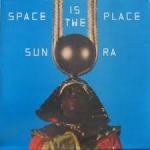 1 Space Is The Place
1 Space Is The Place
This is a middle period Sun Ra album from 1972 and it’s related to the film of the same name, but it’s not the soundtrack. The album is centered by the side-long title track, a chanting excursion with an insistent funk groove with Danny Thompson playing the baritone riff that anchors you in a series of free blowing excursions from saxophonist John Gilmore, altoist Marshall Allen and Sun Ra while singer June Tyson chants the lyrics of freedom in space.
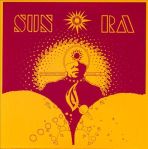 2 The Heliocentric Worlds of Sun Ra Volume 1
2 The Heliocentric Worlds of Sun Ra Volume 1
This is the chamber jazz side of Sun Ra, a music that works with space of the musical kind. Using instruments like the bass marimba, Ra carves out an abstract world that’s about as serene as he gets.
 3 Astro Black
3 Astro Black
This is probably the best example of Sun Ra’s Afrofuturism. The title track is another of Ra’s groove centered songs with heavy synthesizer washes while June Tyson unfolds Ra’s mythology
Astro Black Mythology
Astro Timeless Immortality
Astro Thought in Mystic Sound
Astro Black of Outer Space
Astro Natural of Darkest Stars
Astro Reach Beyond the Stars
It’s intoxicating music.
 4 The Solar Myth Approach Volume 1
4 The Solar Myth Approach Volume 1
This is another one that uses a lot of space in the music, broken up by mind-fracturing improvisations. The first piece is a prototypical space work with Ra playing a trance pulse while horns drone in long sustained tones creating a mood of mystery and menace. For the flip side of sonic density, get the second volume.
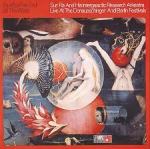 5 It’s After the End of the World
5 It’s After the End of the World
If you have never seen Sun Ra live, then you really haven’t experienced him in full effect. Released in 1970, this combines two live performances from Europe and features the Arkestra at a peak of tightness and innovation.
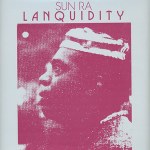 6 Lanquidity
6 Lanquidity
This is one of Sun Ra’s best produced albums and also his funkiest and spaciest in a more conventional sense. Among the usual Ra regulars was guest trumpeter Eddie Gale. Ra adopts a space age bachelor pad approach on tracks like “Lanquidity” and “Twin Stars of Thence” and gets downright spooky spacey on “There are Other Worlds They Have not Told your of)”
This album might be overlooked, but it’s a transitional album where Sun Ra began reincorporating swing music into his repertoire. Along with tracks like “On Sound Infinity Spheres” he also plays a roaring version of “Take the ‘A’ Train.”
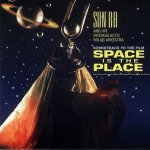 8 Soundtrack to the Film Space is the Place
8 Soundtrack to the Film Space is the Place
This is a great place to start with Sun Ra. It’s the soundtrack to a science fiction film (what else?) he produced in the early 1970s. It features more muted versions of the title piece and “It’s After the End of the World” as well as Sun Ra themes like “We Travel the Spaceways” and “Outer Spaceways Incorporated.” This is as close as Ra gets to bite-sized.
 9 Media Dreams
9 Media Dreams
I cite this album, which I have on an original Sun Ra El Saturn Records pressing with hand-drawn artwork, for one track, the aforementioned “Constellation.” It’s one of the few times where Ra uses a drum machine, in this case a primitive one like you’d find on a home organ, but Ra amps up that groove, doubling it with baritone horns and leads it into a free-funk improvisation with a John Gilmore tenor solo that will rip your gut out.
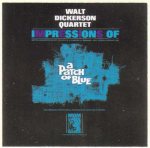 10 Impressions of a Patch of Blue by Walt Dickerson
10 Impressions of a Patch of Blue by Walt Dickerson
This isn’t a Sun Ra album, proper. He’s a sideman to vibraphonist Walt Dickerson and it’s remarkable to hear him in a more restrained and supportive role, playing celeste and harpsichord against Dickerson’s melodic vibe inventions.
I’ve had a more personal relationship with Sun Ra than with most other musicians. Ra came to Philadelphia in 1968. I arrived in 1972. I saw Sun Ra dozens of times live and when I worked at WXPN I saw him in many studio performances and interviews, some of which I conducted. I produced a radio documentary on him in 1982 and in 1997 I produced another one for NPR’s Jazz Profiles, Sun Ra’s Cosmic Swing.
I’ve written liner notes for a few Sun Ra albums, including the reissue of Lanquidity on the Evidence label. In reading over those notes, I realized a lot of it was about my own personal journey with Sun Ra and probably the reason I felt compelled to do an Echoes show on Sun Ra, even though it’s not quite the sound we have on the program.
Lanquidity Liner Notes
In the Germantown section of Philadelphia, there’s an anonymous stone rowhouse with little to distinguish it from the other rundown buildings on the block. But for 25 years, this home had an interior glow powered by a seismic engine of big band jazz, cosmic space music and intergalactic tribalism. This was the home of Sun Ra and his Arkestra.
It was an unlikely location for this “band from outer space,” but then, as Sun Ra confessed to me, “Earth is an unlikely place for me to be in the first place.”
 Philadelphia is often known as a spawning ground for innovative jazz musicians, but it’s also known as a city that musicians eventually leave. John Coltrane, Philly Joe Jones, The Heath Brothers and countless others headed up the New Jersey Turnpike to New York as soon as they garnered any reputation at all. As far as I know, Sun Ra is the only musician to reverse that course of jazz migration, moving to Philadelphia in 1968 and remaining there until he left the planet in 1993.
Philadelphia is often known as a spawning ground for innovative jazz musicians, but it’s also known as a city that musicians eventually leave. John Coltrane, Philly Joe Jones, The Heath Brothers and countless others headed up the New Jersey Turnpike to New York as soon as they garnered any reputation at all. As far as I know, Sun Ra is the only musician to reverse that course of jazz migration, moving to Philadelphia in 1968 and remaining there until he left the planet in 1993.
Lanquidity is one result of this often overlooked chapter in the cosmic annals of Sun Ra. His Arkestra’s gestation in Chicago and pilgrimage to New York City in the glory days of the 60s avant garde are the stuff of legend, but once Ra traveled south to Philadelphia, he might as well have taken a left turn into his hallowed home of Saturn. With long stays in Europe and the west coast and constant touring, he seemed to become a musician of the world rather than a local hero.
Sun Ra arrived in Philadelphia without ceremony, taking up residence at 5626 Morton Street in the declining Germantown section of the city. He said he came because “Philadelphia was the most evil place in the country,” but likely it was because the home was rented to the Arkestra by altoist Marshall Allen’s father. It looked like all the other rowhouses in the neighborhood, except they didn’t have windows covered with tin foil and psychedelic swirls on the door. But then, in the late sixties, that kind of decor hardly warranted a second glance.
Inside the darkened living room, Sun Ra’s electronic keyboards were stacked at one end while the Arkestra piled amongst the frayed furniture and surreal paintings of aliens and Egyptian symbology. Tucked amidst this clutter was an array of cosmic and spiritual paraphernalia. Ra would pull books off the shelf and floor, usually weighty philosophical-mystical tomes like “Book of Urantia.” A garish psychedelic oil painting of Ra, done by a fan, stared from the walls while the aroma of Ra’s vegetarian “Moon Stew” wafted from the kitchen in back. Several members of the Arkestra lived a communal existence in the house, including tenor sax giant John Gilmore and most of the reed section.
https://www.youtube.com/watch?v=6iHWGUa3TR8
You’d think they’d create a scene with the neighbors, but aside from around-the-clock rehearsals, no one was taken aback by Ra and the multi-hued raiment of his band members. Sonny would sit on the front stoop of the house, bantering with neighbors as they walked by on a hot Philly summer afternoon. And he was listed in the Philadelphia phone book just like them, under Ra, Sun.
Across the street from the house was an empty, wooded lot. When a tree there was felled by a lightning strike, Sun Ra had James Jacson get a piece of it to create the “Thunder Drum,” a centerpiece of Ra’s performances thereafter.
If you were on the Philadelphia jazz scene from 1968 to his passing in 1993, you couldn’t miss Sun Ra’s presence. Ra played concerts on a consistently irregular basis. In the early days, you might catch the Arkestra literally falling off the stage of Geno’s Empty Foxhole, their 18 plus musicians and dancers finding scant room on a minuscule proscenium accustomed to trios. Located in the parish hall basement of St. Mary’s Church, the Empty Foxhole, gave new meaning to the term “underground.” The first two rows were ripped out bus seats, the next few were old church pews and the rest were a motley collection of folding chairs. Yet, this was the Philly stop for The Art Ensemble of Chicago, Pharoah Sanders, Anthony Braxton, Sam Rivers and other luminaries of the seventies avant-garde.
Sun Ra quickly outgrew the parish hall basement of the Foxhole and moved up to the actual church itself. St. Mary’s was one of many religious venues in which Ra performed in Philadelphia and although his music may have been sanctified, these churches never had an experience like this before or after. Playing a Halloween eve show at United Calvary Methodist Church in West Philadelphia, the altar/stage was bathed in a classic 60s liquid light show from Michel Polizzi’s Quasar Lights, while the Arkestra danced through the pews in a cosmic conga line. Ra would pull unsuspecting audience members out of their seats and shout in their faces, “Will you give up your death for me?”
But Sun Ra didn’t need churches or light shows for atmosphere. He transformed every place he played into a carnival, whether it was the cramped club Grendel’s Lair on South Street, the Painted Bride Art Center in Old City or the steps of the Philadelphia Museum of Art.
Because of Sun Ra’s residence in Philadelphia, it became the place to pick up his obscure, self-produced El Saturn sides. At Third Street Jazz & Rock, a record store at Third and Market Streets in Center City, Ra held a hallowed spot. The entire back wall was covered with John Coltrane albums, but the wall on the left was filled with the hand-painted covers of Sun Ra’s El Saturn label. Every few weeks or so, Ra baritone saxophonist and foreman Danny Thompson, would walk into the store, an armful of Sun Ra’s latest opus or two under his arms and negotiate a C.O.D. deal with store owner Jerry Gordon. Philadelphia fans heard Ra odysseys like Media Dreams and Disco 3000 that are rarities elsewhere, and classics like Live At Montreux debuted in Philadelphia on El Saturn years before they were released on “regular” commercial labels.
Ra probably never got as much radio exposure as he did in Philadelphia at this time. He appeared frequently on Temple University’s jazz station, WRTI and until the mid-1980s, Sun Ra sides were de rigeur on Blue Genesis, the nightly jazz show on the University of Pennsylvania’s WXPN. Sonny himself was a frequent guest, expounding on the universe as college DJs sat with a mixture of fear and confusion. I know. I was one of them.
“When you interviewed Ra, the questions that you asked really didn’t matter much,” remembers Russell Woessner, a DJ on WXPN and WRTI. “He’d respond with his own answers. He told me once he was an angel and that stopped me in my tracks.”
Often, Ra would bring up his books of poetry and read them on the air, as the DJ mixed in music from his albums.
I can remember more than one occasion with sixteen Arkestra members cramming into WXPN’s minuscule studio, Ra pounding on a creaky upright piano, the horns blasting and Ra dancers cavorting in the hallway while DJ/engineers Woessner, Jules Epstein and Kimberly Haas tried to wrestle the sound onto the air. After the last note had bleated away, Danny Thompson walked in the control booth and took the tapes, some eventually surfacing as Sun Ra albums like My Favorite Things.
 At one point, Ra tried to convince WXPN’s program director, Jules Epstein, to marshal 144,000 musicians to perform a sacred concert related to the coming biblical Armageddon. Epstein wasn’t quite persuaded, but Ra succeeded in convincing WXPN chief engineer Tom Buchler to record him for Buchler’s own fledgling Philly Jazz label, which you now hold in your hands.
At one point, Ra tried to convince WXPN’s program director, Jules Epstein, to marshal 144,000 musicians to perform a sacred concert related to the coming biblical Armageddon. Epstein wasn’t quite persuaded, but Ra succeeded in convincing WXPN chief engineer Tom Buchler to record him for Buchler’s own fledgling Philly Jazz label, which you now hold in your hands.
Ra occasionally broke the surface of the jazz underground in Philadelphia. He performed on Philadelphia’s public TV station, WHYY and he was documented in local filmmaker Bob Mugge’s Sun Ra: Make A Joyful Noise. Mugge couldn’t afford to bring Sun Ra to the great pyramids, so he filmed him in the Egyptian rooms of the Museum of the University of Pennsylvania.
The Mellon Jazz Festival was dedicated to Sun Ra in the year 2000, although I suspect Sonny, who always liked science fiction, would’ve preferred being honored in 2001, in keeping with Arthur C. Clarke’s 2001: A Space Odyssey. He certainly took Philadelphia on a trip.
Although he left the planet from his childhood home in Birmingham, Alabama, Sun Ra’s life effectively ended in Philadelphia after he suffered a series of increasingly debilitating strokes.
The house at 5626 Morton is a bit quieter now and other Arkestra members, including John Gilmore and James Jacson have also moved on to other worlds. Yet, the band continues on, now under the direction of Marshall Allen. Members of the Arkestra still live in Sun Ra’s home, and if you drive by you might still catch an echo of the music created there.
John Diliberto (((echoes)))

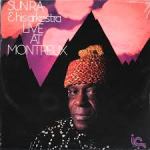

I recorded a concert for the band at NYC’s Bottom Line. I wish my memory was better, I do not remember the exact year. I can say 76 through 82. I had surreptitiously recorded them at the Five Spot, but was spotted. Richie, the road mgr confiscated my tapes. I saw him at all of the bands many NY appearances and he soon told me Sonny liked my recording and would I record for them at the upcoming gig. I was placed in a room above and to the right of the stage where they had extra sound system equipment. I was given use of a ten track mixer, the house soundmans feed and the raw mic feeds from the stage. Recordings were made on a Nakamichi 550, a Nak home deck, and Ra’s reel to reel. I had the advantage of knowing the music, which let me triangulate the solos better than the house sound as there were only 7 or 8 mikes on stage.
Richie collected the tapes after the show. I never had the opportunity to hear the tapes, nor do I know if any of the material found it’s way onto an El Saturn release.
I married shortly thereafter and that was the end of my going to shows.
If you could verify any of this with any band members if you are still in contact, if any remember, I would love to know if the recordings were well thought of and if they were ever issued in any way.
“The Heliocentric Worlds Pt. II”, “Atlantis” and “The Magic City” are terrific too!
There is no shortage of great Sun Ra albums out there!
Love this. Seeing Sun Ra in ’68, “cold,” in Seattle changed my way of thinking.